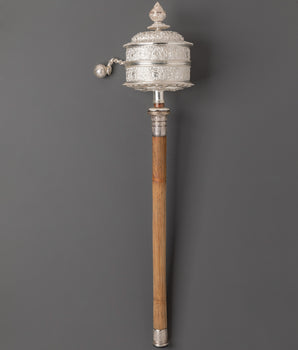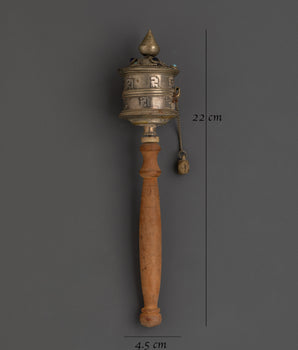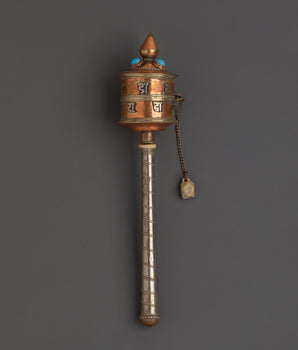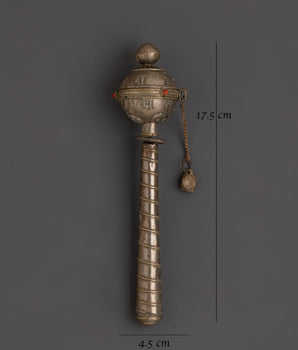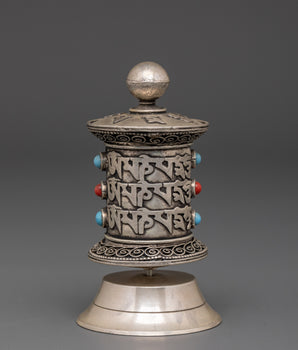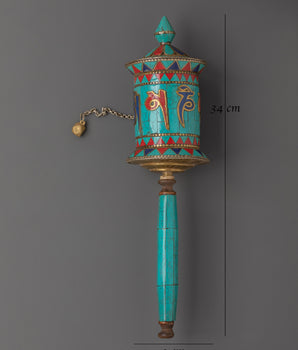Buddhist Prayer Wheel Collection
Hand-Carved, Gold, Silver, Copper & Brass Prayer Wheels – Perfect for Home Altars, Monasteries & Daily Practice
The Significance of the Buddhist Prayer Wheel
A Buddhist Prayer Wheel (Mani Wheel) is a sacred Vajrayana ritual object containing scrolls of the Om Mani Padme Hum mantra. Spinning the wheel is believed to multiply the merit of reciting the mantra thousands of times, purify negative karma, and generate compassion for all beings. It is used in meditation practice, pujas, and circumambulation around stupas and shrines.
Our Collection Highlights
Each Prayer Wheel in our collection is purely handmade in Nepal by master artisans, incorporating traditional design and precise mantra placement. Available in various sizes, materials, and mounting styles, they are suitable for both personal and monastic use.
-
Gold-Plated Prayer Wheels – Premium finish for altars and special offerings.
-
Silver Prayer Wheels – Elegant and highly symbolic of purity.
-
Copper Prayer Wheels – Traditional and long-lasting for regular practice.
-
Brass Prayer Wheels – Strong, timeless, and perfect for outdoor or temple use.
-
Tabletop & Handheld Prayer Wheels – Portable or stationary, ideal for different practices.
Why Choose Our Prayer Wheels
-
Authentic Mantra Scrolls Inside – Meticulously hand-written and rolled with sacred care.
-
Multiple Sizes & Price Ranges – From small travel prayer wheels to large monastery wheels.
-
Purely Hand-Carved & Hand-Engraved – Featuring intricate Tibetan motifs and auspicious symbols.
-
Perfect for Daily Practice – Enhances meditation, focus, and compassion.
-
Worldwide Shipping – Secure, insured delivery to your doorstep.
Who This Collection is For
-
Practitioners wishing to deepen their mantra recitation practice.
-
Monasteries, Dharma centers, and temples.
-
Collectors of authentic Tibetan Buddhist ritual objects.
-
Devotees looking for meaningful spiritual gifts.
Your cart is currently empty.
Start Shopping






























